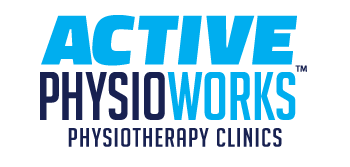Incidence and Prevention of Basketball Injuries
Jun 10, 2014
What are the most common types of injury sustained in basketball?
Of all of the time loss injuries occurring in basketball each year the most common were:
42% of injuries to the ankle/ foot
11% hip and thigh
9% knee
Of these injuries 43% were sprain type injuries. General trauma was the second most common type of injury sustained (22%). 60% of these injuries occurred at practice and 59% of game related injuries occurred in the 2nd half. This identifies fatigue and essential warm up as predisposing factors to injury.
*This information was based on a study of high school students completed by NATA
Ankle sprains:
The most common injury occurring in basketball is the ankle sprain. It usually occurs as a result of stepping on another player’s foot and creating an outward rolling of the ankle. This places the ankle ligaments under stretch and risk for a possible tear. Treatment involves a period of immobilization and physical therapy to ensure proper return to play. An individualized program including protection, rest, ice, exercise and balance retraining is key to preventing re-occurring ankle sprains and chronic ankle instability (CAI).
Knee Injuries:
Some of the most common types of knee injuries sustained in basketball are minor sprains, meniscal lesions and the dreaded ACL tear. Minor sprains are treated similar to ankle sprains where a period of immobilization and physical therapy is necessary for the ligament to heal and scar down. Meniscal lesions occur as a result of a plant and twist and can vary from an irritation to a tear. This is the cushion between the two bones of the knee and often requires surgery if there are symptoms of giving way, locking or catching. Otherwise they can be managed with conservative care. Depending on the severity of an ACL tear (a ligament that passes through the centre of the knee), surgical intervention may be necessary to prevent “giving way”. Otherwise a strong emphasis on strengthening of the anterior and posterior thigh muscles is necessary to compensate for the lack of stability in the knee.
Overuse injuries:
Overuse injuries occur as a result of repetitive micro trauma, and are caused by repetitive stresses to a particular tissue in our bodies. The most common overuse injury in basketball is patellar tendinitis. This is also referred to as jumper’s knee, and is the result of repetitive stress to the tendon below your kneecap. Other common overuse injuries include Achilles tendinitis and rotator cuff tendinitis. All of these injuries are manageable with conservative care and physical therapy.
Prevention of basketball related injuries:
Below is a list of simple prevention techniques that you can incorporate into your sport to avoid the possibility of being injured.
Maintain your fitness and hydrate- as previously mentioned 59% of in game injuries occurred in the second half of play which demonstrates a huge predisposing factor of fatigue.
Focus on the task at hand- be aware of your surroundings/where other players are at on the court
Use appropriate protective equipment when necessary- non skid, snug basketball shoes, ankle supports for recurring ankle injuries, mouth guard, removal of all jewellery
Safe surrondings- ensure outdoor courts are clear of rocks, walls and posts should be padded, boundary lines at sufficient length from bleachers etc.
Limit overuse injuries- limit the number of teams your child plays on per year, allow your child to experience other sports as it is essential to stressing other body tissues and also important for skill development
Seek a health care professional (Physical Therapist)- Physical therapists are highly educated in the prevention and management of sport related injuries. Whether you are currently injured or not, a Physical Therapist will be able to create a treatment program individualized to your needs. A Physical Therapist will perform a detailed assessment of your movements patterns including running, walking, jumping, lateral movement, cutting and balance to determine if any imbalances are present which may make you susceptible to injury. These details will then be taken into consideration when tailoring a program to best suit your prevention or injury related needs.
To book an appointment today please call us at 780-458-8502, or visit our website at www.activephysioworks.com
Please add your bio info through your member profile page, or through your dashboard.

